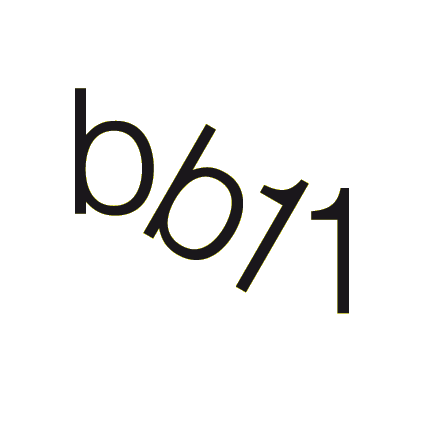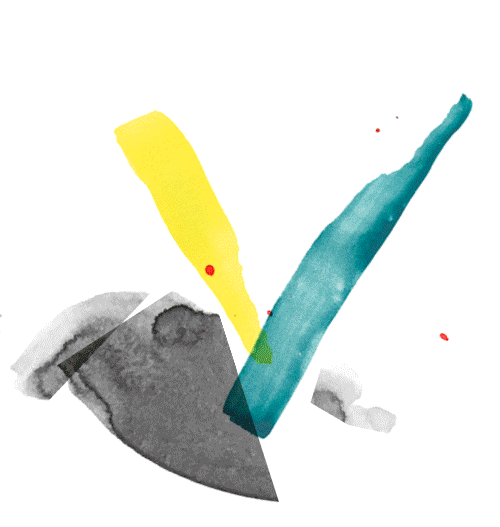

Sign up for our newsletters. You can change the settings or unsubscribe at any time.
Thank you for your subscription. We have sent you an e-mail with a confirmation link.


exp. 1
exp. 2
exp. 3

Till Gathmann
Was part of: exp. 1
Till Gathmann
Born 1977 in Paderborn, DE – lives and works in Berlin, DE
“How to start a design process: (1) Focus on the plans, references, objects, and fantasies of the counterpart. Pay particular attention to the way these are described. (2) Consider this material in the widest sense. (3) Memorize the images and ideas that emerge in this process as a way of getting closer to the material. (4) Consider these memories as models of understanding. (5) Find and assemble elements to objectify these models. (6) Concentrate on the material implications, the actual materiality of the objectified models (i.e. soft/hard, wire, bending) and follow their logic. (7) Use these objects to communicate with the counterpart, figure out if they can speak on their own terms.” (Till Gathmann)
II: La Solidaridad va Más Allá de un Concepto. Entre las Curadoras de la XI Berlin Biennale
Lisette Lagnado, Agustín Pérez Rubio
Conversation
O Bailado do Deus Morto
Flávio de Carvalho
Play
Glossary of Common Knowledge
L’Internationale Online
Glossary
Maternidades subversivas
María Llopis
Monograph
BLM KOREA ARTS
#BlackLivesMatter #BLMKoreaArts
Young-jun Tak
Statement
Museo de la Solidaridad Salvador Allende (MSSA) in Berlin
A conversation between María Berríos and Melanie Roumiguière
Conversation
By using this website you agree to the use of cookies in accordance with our data privacy policy.

Till Gathmann
Was part of: exp. 1
Till Gathmann
Born 1977 in Paderborn, DE – lives and works in Berlin, DE
“How to start a design process: (1) Focus on the plans, references, objects, and fantasies of the counterpart. Pay particular attention to the way these are described. (2) Consider this material in the widest sense. (3) Memorize the images and ideas that emerge in this process as a way of getting closer to the material. (4) Consider these memories as models of understanding. (5) Find and assemble elements to objectify these models. (6) Concentrate on the material implications, the actual materiality of the objectified models (i.e. soft/hard, wire, bending) and follow their logic. (7) Use these objects to communicate with the counterpart, figure out if they can speak on their own terms.” (Till Gathmann)
Queer Ancient Ways: A Decolonial Exploration
Zairong Xiang
Monograph
Umbilical Cord Amulet
McCord Museum
Object
A Moment of True Decolonization / Episode #6: Sinthujan Varatharajah. Constructing the Tamil Eelam State
The Funambulist / Sinthujan Varatharajah
Podcast
Memorial to the Sinti and Roma Victims of National Socialism
Dani Karavan
Memorial
Struggle as Culture: The Museum of Solidarity, 1971–73
María Berríos
Essay
IV: How Fear Can Dismantle a Body. Vis-a-Vis with two of four curators of the 11th Berlin Biennale
María Berríos, Lisette Lagnado
Conversation
By using this website you agree to the use of cookies in accordance with our data privacy policy.

Till Gathmann
Was part of: exp. 1
Till Gathmann
Born 1977 in Paderborn, DE – lives and works in Berlin, DE
“How to start a design process: (1) Focus on the plans, references, objects, and fantasies of the counterpart. Pay particular attention to the way these are described. (2) Consider this material in the widest sense. (3) Memorize the images and ideas that emerge in this process as a way of getting closer to the material. (4) Consider these memories as models of understanding. (5) Find and assemble elements to objectify these models. (6) Concentrate on the material implications, the actual materiality of the objectified models (i.e. soft/hard, wire, bending) and follow their logic. (7) Use these objects to communicate with the counterpart, figure out if they can speak on their own terms.” (Till Gathmann)
IV: How Fear Can Dismantle a Body. Vis-a-Vis with two of four curators of the 11th Berlin Biennale
María Berríos, Lisette Lagnado
Conversation
New Look
Flávio de Carvalho
Performance
Glossary of Common Knowledge
L’Internationale Online
Glossary
Memorial to the Sinti and Roma Victims of National Socialism
Dani Karavan
Memorial
I: Junto a las curadoras de la XI Berlin Biennale for Contemporary Art
Renata Cervetto, Lisette Lagnado
Conversation
„Klaus Eckschen: Hörspiel“
Die Remise
Hörspiel
By using this website you agree to the use of cookies in accordance with our data privacy policy.

Till Gathmann
Was part of: exp. 1
Till Gathmann
Born 1977 in Paderborn, DE – lives and works in Berlin, DE
“How to start a design process: (1) Focus on the plans, references, objects, and fantasies of the counterpart. Pay particular attention to the way these are described. (2) Consider this material in the widest sense. (3) Memorize the images and ideas that emerge in this process as a way of getting closer to the material. (4) Consider these memories as models of understanding. (5) Find and assemble elements to objectify these models. (6) Concentrate on the material implications, the actual materiality of the objectified models (i.e. soft/hard, wire, bending) and follow their logic. (7) Use these objects to communicate with the counterpart, figure out if they can speak on their own terms.” (Till Gathmann)
Invitation to the Species: Cecilia Vicuña
Tamaas / Cecilia Vicuña
Podcast
Solidarity and Storytelling. Rumors against Enclosure
María Berríos
Essay
Undocumented Rumours and Disappearing Acts from Chile
María Berríos
Essay
Umbilical Cord Amulet
McCord Museum
Object
Museo de la Solidaridad Salvador Allende (MSSA) in Berlin
A conversation between María Berríos and Melanie Roumiguière
Conversation
IV: How Fear Can Dismantle a Body. Vis-a-Vis with two of four curators of the 11th Berlin Biennale
María Berríos, Lisette Lagnado
Conversation
By using this website you agree to the use of cookies in accordance with our data privacy policy.
By using this website you agree to the use of cookies in accordance with our data privacy policy.




